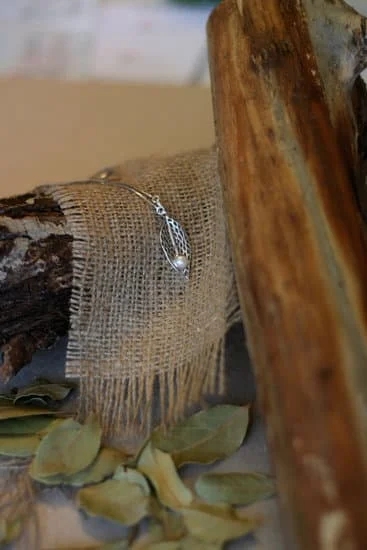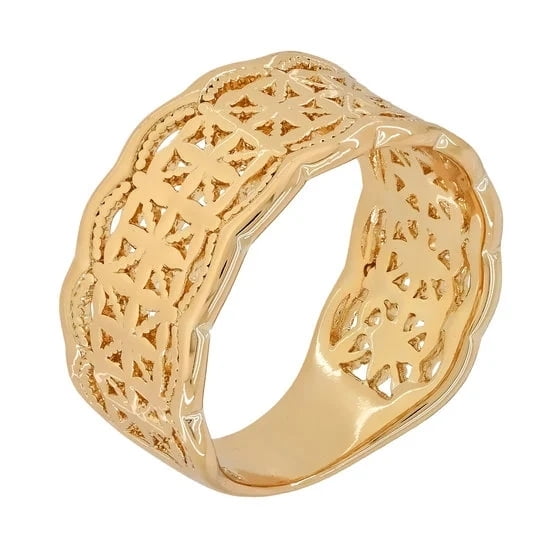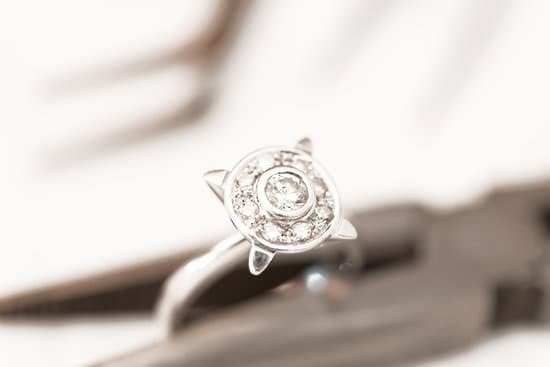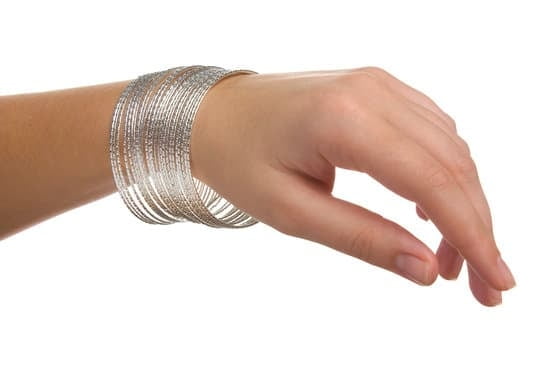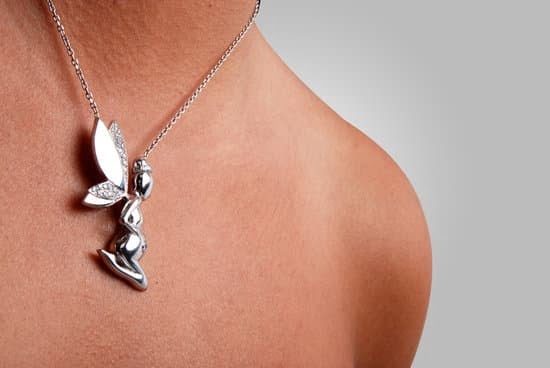Rhodium plated jewelry is a popular and trendy choice in the fashion world. Its unique shine, durability, and affordability have made it a sought-after option for jewelry lovers everywhere. In this article, we will explore why rhodium plated jewelry has gained such popularity and offer practical tips on how to care for these stunning pieces.
Rhodium plated jewelry refers to pieces that have been coated with a thin layer of rhodium, a precious metal from the platinum family. This plating process not only enhances the appearance of the jewelry but also adds a layer of protection, making it more resistant to scratches and tarnish. The result is jewelry that maintains its luster and beauty for longer periods of time.
One of the primary reasons why rhodium plated jewelry has become so popular is because it offers an affordable alternative to other precious metals like gold or platinum. With rhodium plating, you can enjoy the luxurious look of white gold or platinum without breaking the bank. Additionally, the bright shine that rhodium provides gives these pieces an eye-catching allure that is irresistible.
Whether you’re new to owning rhodium plated jewelry or are looking for ways to extend its lifespan, proper care is crucial.
In the following sections, we will delve into understanding how rhodium plating is done, daily maintenance tips for keeping your jewelry sparkling, minding jewelry wearing etiquette, spotless cleaning techniques, natural solutions for care at home, when to seek professional help for repair or replating, long-term care practices, and additional tips and FAQs related to caring for your precious rhodium plated jewelry.
By following these guidelines and investing in regular maintenance routines, you can ensure that your rhodium plated jewelry remains stunning and enjoys a prolonged lifespan. So let’s dive in and discover how you can care for your treasured rhodium plated gems.
Understanding the Process
Rhodium plating is a process that involves the application of a thin layer of rhodium onto the surface of jewelry, typically made of silver or white gold. This plating technique is commonly done in the fashion industry to enhance the appearance and durability of jewelry pieces. Understanding how rhodium plating is done can give you a better appreciation for this popular jewelry trend.
The process of rhodium plating begins with a thorough cleaning of the jewelry piece to remove any dirt, oils, or residues that may affect the adhesion of the rhodium. Once cleaned, the jewelry is dipped into an electroplating solution that contains rhodium. An electric current is then passed through the solution, causing a chemical reaction that deposits a thin layer of rhodium onto the surface of the jewelry.
One important aspect to note is that rhodium plating should be done by a professional jeweler who has experience in handling this process. A professional will have the necessary equipment and expertise to ensure a proper and even coating on your jewelry. Attempting to do it yourself may result in uneven plating or damage to your precious pieces.
| Process Steps | Benefits |
|---|---|
| Cleaning the jewelry | Ensures proper adhesion |
| Dipping into electroplating solution with rhodium | Deposits thin layer evenly |
| Passing electric current through solution | Achieves chemical reaction for plating |
Rhodium plating provides several benefits to your jewelry pieces. Firstly, it adds durability and resistance against scratches and wear, extending their lifespan. Secondly, it enhances the shine and luster of the jewelry, giving it a brilliant and reflective surface. Lastly, rhodium plating is also an affordable option to achieve the look of more expensive metals like platinum, making it a popular choice among jewelry enthusiasts.
Understanding the process of rhodium plating can help you make informed decisions when it comes to caring for your rhodium plated jewelry. By choosing a professional jeweler and understanding the steps involved in this process, you can ensure that your jewelry remains beautiful and pristine for years to come.
Daily Maintenance Tips
Taking proper care of your rhodium plated jewelry on a daily basis is essential to keep it looking sparkling and beautiful. Here are some practical tips to help you maintain the shine and longevity of your favorite pieces:
Gentle Cleaning Techniques
Regularly clean your rhodium plated jewelry using mild soap, warm water, and a soft cloth. Gently wipe away any dirt or residue without scrubbing too hard, as this can scratch the plating. Avoid using harsh chemicals or abrasive materials that can strip off the rhodium plating.
Avoid Harsh Chemicals
When wearing rhodium plated jewelry, it is important to avoid direct contact with household chemicals such as bleach, chlorine, or cleaning agents. These chemicals can tarnish or corrode the plating, leading to a dull appearance. Take extra caution when applying lotions, perfumes, or hairsprays to ensure they do not come into contact with your jewelry.
Proper Storage
Store your rhodium plated jewelry separate from other pieces to prevent scratching and tangling. Consider using individual pouches or velvet-lined boxes to protect each item from moisture and dust. It is also advisable to store your jewelry in a cool and dry place away from direct sunlight exposure, as extreme temperatures can potentially damage the plating.
Avoid Water and Sweat
To maintain the shine of rhodium plated jewelry for a long time, it is best to avoid wearing it while swimming, showering, or engaging in activities that cause excessive sweating. Exposure to water and sweat can accelerate the wear of the rhodium plating and affect its luster.
Remember that proper daily maintenance is key to preserving the beauty of your rhodium plated jewelry. By following these simple tips for cleaning, avoiding harsh chemicals and extreme conditions, as well as adopting proper storage habits, you’ll be able to enjoy your glamorous pieces for years to come.
Mind the Jewelry Wearing Etiquette
When it comes to wearing rhodium plated jewelry, there are certain guidelines that should be followed to ensure its longevity and maintain its beauty. By minding the jewelry wearing etiquette, you can protect your rhodium plated jewels and enjoy them for years to come.
One of the key aspects of protecting your rhodium plated jewelry is to avoid contact with water. Water can cause the rhodium plating to wear off more quickly, leading to a dull appearance. This means removing your rhodium plated jewelry before activities such as swimming, showering, or doing dishes. It’s also important to remove your jewelry before engaging in heavy physical activities that could potentially damage the plating.
Another factor to consider is avoiding contact with sweat. Sweat can have a corrosive effect on rhodium plating, causing it to wear off faster and lose its shine. To prevent this, it’s advisable to remove your rhodium plated jewelry before exercising or engaging in activities that make you sweat excessively.
Proper storage of your rhodium plated jewelry is also essential for maintaining its quality. Avoid storing your jewelry pieces in humid areas or exposed to direct sunlight as these can accelerate tarnishing. It’s best to store them individually in soft cloth pouches or separate compartments in a jewelry box.
| Etiquette Tips | Explanation |
|---|---|
| Avoid contact with water | Water can cause the rhodium plating to wear off more quickly |
| Avoid contact with sweat | Sweat can have a corrosive effect on rhodium plating, causing it to wear off faster and lose its shine |
| Proper storage | Avoid storing jewelry in humid areas or exposed to direct sunlight. Store them individually in soft cloth pouches or separate compartments in a jewelry box. |
Spotless Cleaning Techniques
Rhodium plated jewelry, although known for its durability and unique shine, can sometimes tarnish over time. Luckily, there are spotless cleaning techniques that can effectively remove tarnish and restore the beautiful shine of your rhodium plated jewelry.
- Gather the necessary materials: To clean your rhodium plated jewelry, you will need a soft microfiber cloth or a soft-bristle toothbrush, mild dish soap, warm water, and a small bowl or sink.
- Prepare a cleaning solution: Fill the bowl or sink with warm water and add a few drops of mild dish soap. Mix the solution gently until it creates a soapy mixture.
- Soak the jewelry: Place your rhodium plated jewelry in the soapy water solution and let it soak for about 10-15 minutes. This will loosen any dirt or residue on the surface.
- Gently clean: After soaking, use a soft microfiber cloth or a soft-bristle toothbrush to gently scrub away any remaining dirt or tarnish on the jewelry. Be sure to pay attention to hard-to-reach areas and crevices.
- Rinse thoroughly: Once you have finished cleaning, rinse the rhodium plated jewelry under running water to remove any soap residue. Be careful not to drop your jewelry down the drain.
- Dry thoroughly: Pat dry your cleaned rhodium plated jewelry with a clean microfiber cloth and let it air dry completely before storing it away.
Remember to be gentle while cleaning your rhodium plated jewelry to avoid scratching or damaging the delicate plating. Additionally, avoid using abrasive materials such as baking soda or harsh chemicals as they can strip off the rhodium plating.
By following these spotless cleaning techniques, you can effectively remove tarnish from your rhodium plated jewelry and maintain its exquisite shine for years to come.
DIY Home Remedies
Cleaning with Baking Soda
One of the most effective and gentle ways to clean your rhodium plated jewelry at home is by using baking soda. Start by creating a paste by mixing baking soda with a small amount of water. Gently apply the paste onto your jewelry using a soft cloth or a toothbrush with extra soft bristles.
Rub the paste on the jewelry in small circular motions, paying attention to any tarnished areas. Rinse the jewelry thoroughly with warm water and pat it dry with a clean towel. Baking soda’s mild abrasive properties help remove tarnish without causing damage to the rhodium plating.
Lemon Juice Method
Another natural remedy to restore shine to your rhodium plated jewelry is by using lemon juice. Cut a fresh lemon in half and squeeze out its juice into a bowl. Dip a soft, lint-free cloth or cotton ball into the lemon juice and gently rub it onto your jewelry, focusing on areas with tarnish or discoloration.
Let the lemon juice sit on the jewelry for a few minutes, then rinse it off with warm water thoroughly. Finally, dry it gently with a clean cloth. Lemon juice acts as a natural cleanser due to its acid content, which helps eliminate tarnish from rhodium plating.
Vinegar Solution
Vinegar is another common household ingredient that can be used to clean rhodium plated jewelry effectively. Prepare a solution by mixing equal parts white vinegar and water in a bowl or container. Soak your jewelry in this solution for 10-15 minutes, allowing the vinegar to break down any tarnish present on the surface of the plating.
After soaking, remove your accessories from the solution and rinse them thoroughly under warm water. Pat them dry gently with a clean cloth before storing them properly.
Remember that these DIY remedies should be used sparingly and not too frequently. Overusing them can gradually strip away the rhodium plating. It’s recommended to limit these natural cleaning methods to once every few months or as needed when your jewelry begins to lose its shine.
When to Seek Professional Help
Rhodium plated jewelry is known for its durability and long-lasting shine. However, over time, the rhodium plating may wear off or become damaged, requiring professional repair or replating. It’s important to know when to seek professional help to ensure that your rhodium plated jewelry remains in optimal condition. Here are some signs that indicate it’s time to bring your jewelry to a professional jeweler:
- Faded or Discolored Areas: If you notice any areas of your rhodium plated jewelry that have faded or become discolored, it’s a clear sign that the rhodium plating has worn off. This can happen due to frequent wear, exposure to chemicals, or simply as a result of everyday activities. Bringing your jewelry to a professional will allow them to assess the damage and determine whether it requires replating.
- Scratches or Wear Marks: Over time, rhodium plated jewelry may develop scratches or wear marks due to regular use or improper handling. These imperfections can make your jewelry appear dull and less shiny. A professional can assess the extent of the damage and recommend the appropriate repairs or replating needed.
- Loose Stones: If you have any rhodium plated jewelry with gemstones or diamonds, it’s important to check regularly if they are secure. If you notice any loose stones, don’t attempt to fix them yourself as this can cause further damage. Instead, take your piece of jewelry to a professional who can safely secure the stones and ensure they won’t be lost.
- Tarnishing on Non-Plated Areas: While rhodium plating provides protection against tarnish, other untreated areas of your jewelry may still be susceptible. If you notice tarnishing on non-plated parts such as chains or clasps, it could be an indication of underlying issues with the base metal. A professional can examine your jewelry and determine the best course of action to address the tarnishing.
By seeking professional help for repairing or replating your rhodium plated jewelry, you ensure that it remains in top condition and retains its beautiful shine. When choosing a jeweler, look for someone with experience in working with rhodium plating and a good reputation for quality craftsmanship.
Additionally, consider scheduling regular inspections to catch any issues early on and prolong the lifespan of your beloved jewelry pieces. Remember, proper care and maintenance will help you enjoy your rhodium plated jewelry for years to come.
Long-Term Care
Importance of Long-Term Care
To ensure that your rhodium plated jewelry continues to shine and look its best for years to come, it is essential to practice long-term care. Proper maintenance routines and storage methods can help prolong the lifespan of your jewelry and preserve its stunning appearance. By investing a little time and effort into caring for your rhodium plated pieces, you can enjoy their beauty and elegance even longer.
Regular Cleaning Routine
One of the key aspects of long-term care is establishing a regular cleaning routine for your rhodium plated jewelry. Cleaning not only helps remove dirt, oils, and other debris but also reduces the chances of tarnishing.
It is recommended to gently clean your Jewelry using mild soapy water or a non-abrasive jewelry cleaner. Use a soft cloth or brush specifically designed for jewelry cleaning to carefully remove any dirt or residue while avoiding excessive pressure that can scratch the surface.
Proper Storage Practices
Another crucial factor in extending the life of your rhodium plated jewelry is proper storage. When not wearing your pieces, it is important to store them in a safe and protective manner. Avoid exposing them to direct sunlight as prolonged exposure can cause fading or discoloration.
Store each piece separately in a soft cloth pouch or a lined jewelry box to prevent scratches and tangling with other pieces. If possible, keep any original packaging that came with your jewelry, as it often provides additional protection against moisture or air exposure.
By incorporating these long-term care practices into your routine, you can ensure that your rhodium plated jewelry remains radiant and beautiful for many years. Regular cleaning removes impurities while proper storage minimizes the risk of damage or deterioration. Remember, taking preventive measures like these will help protect your investment and allow you to showcase your stunning rhodium plated pieces with confidence.
Additional Tips and FAQs
In addition to the information provided in this guide, here are some additional tips and answers to common questions about caring for rhodium plated jewelry.
One common concern is whether or not rhodium plating can cause allergic reactions. While rare, some individuals may have an allergic reaction to rhodium plating. This is typically due to a sensitivity to the base metal underneath the plating rather than the rhodium itself. If you experience any discomfort or irritation while wearing rhodium plated jewelry, it is best to consult with a dermatologist or switch to hypoallergenic jewelry options.
Another frequently asked question is whether or not it is safe to wear rhodium plated jewelry in water. While rhodium plating provides a protective barrier, it is still recommended to avoid prolonged exposure to water. Water can eventually weaken the plating, leading to discoloration and damage. It’s best practice to remove your rhodium plated jewelry before swimming, bathing or engaging in activities that could expose it to excessive moisture.
Lastly, it’s important to note that over time, the rhodium plating on your jewelry will naturally wear off. The frequency at which this occurs depends on several factors including how often you wear the item and how vigorously you clean and maintain it. When you start noticing areas where the underlying metal is visible, it may be time to seek professional help for re-plating or repairing your piece of jewelry.
By following these care techniques and incorporating them into your daily routine, you can ensure that your rhodium plated jewelry retains its beautiful shine and remains a cherished accessory for years to come. Remember: proper cleaning, storage, and avoiding harsh chemicals and activities will help extend the life of your precious pieces.
Frequently Asked Questions
How do you clean rhodium plated jewellery?
Cleaning rhodium plated jewellery requires a gentle approach to avoid damaging the plating. It is best to start by rinsing the piece with lukewarm water to remove any dirt or debris. Then, using a soft cloth or a non-abrasive brush, gently clean the jewellery with a mild soap or jewellery cleaner specifically formulated for plated metals.
Avoid using any harsh chemicals or abrasive materials that could strip away the rhodium plating. After cleaning, rinse the piece thoroughly and pat dry with a soft cloth.
Can you shower with rhodium plated jewellery?
While it is generally recommended to avoid exposing rhodium plated jewellery to water, including showers, there may be some variation depending on individual manufacturer’s recommendations. While rhodium plating provides enhanced resistance against tarnishing and wear, excessive exposure to water can gradually wear away the plating over time, potentially diminishing its appearance and durability.
To prolong the lifespan of your rhodium plated jewellery, it is advisable to remove it before showering or engaging in activities that may involve prolonged exposure to water.
What is the downside of rhodium plating?
One downside of rhodium plating is that it requires periodic maintenance and reapplication over time. Although rhodium is highly resistant to tarnish and wear compared to other metals like silver or gold, it will gradually wear away with regular use.
Eventually, this may lead to a duller appearance of the jewellery as the underlying metal starts showing through. To maintain the lustrous appearance, some individuals may find themselves needing to have their pieces re-plated periodically, which can add extra cost and effort compared to non-plated alternatives.

Welcome to my jewelry blog! My name is Sarah and I am the owner of this blog.
I love making jewelry and sharing my creations with others.
So whether you’re someone who loves wearing jewelry yourself or simply enjoys learning about it, be sure to check out my blog for insightful posts on everything related to this exciting topic!

